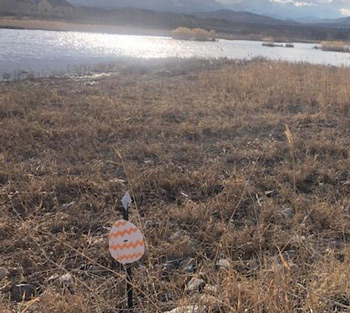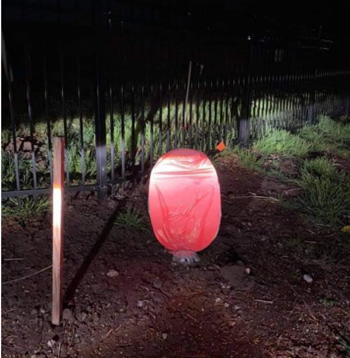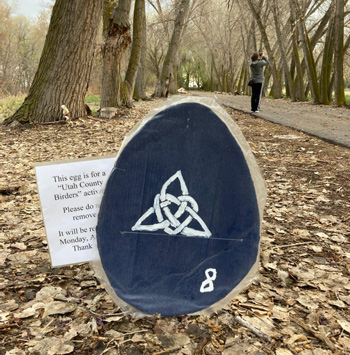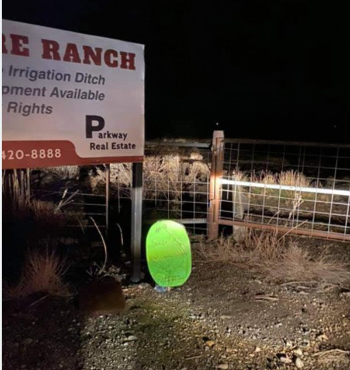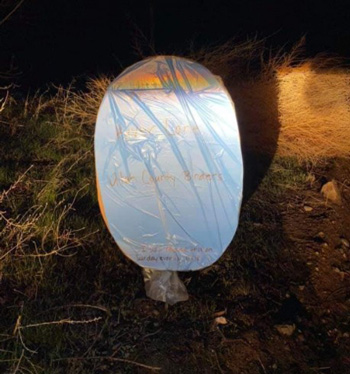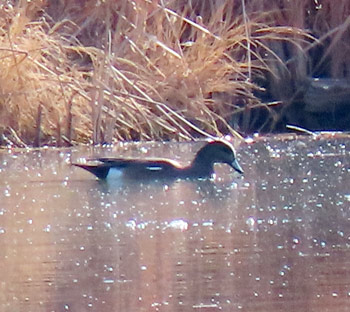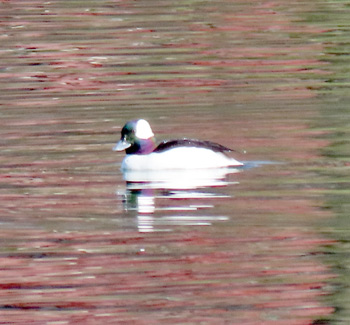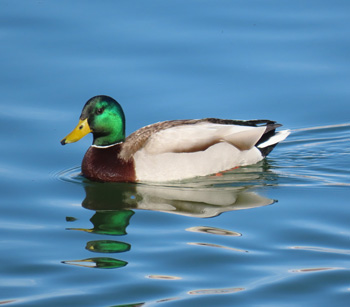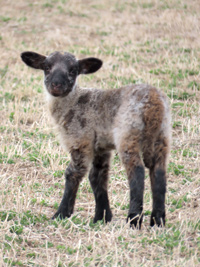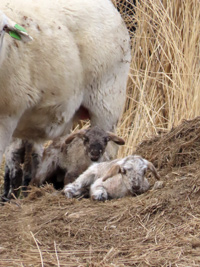|
April
2021
Contents
Monthly Meeting
Upcoming Field Trips
President's Message
Bird of the Month
Special Articles
Field Trip Reports
APRIL MEETING:
Oliver Hansen will present "Birding in Beliz" this
Thursday, April 15th at 7pm via Zoom.
Summary of March's Meeting
.... and inks to the meeting recording and more
information
Thanks to all those who joined us for our March Meeting. We
had a great presentation on the North American Breeding Bird Survey from
Cooper, Bailey, and Russ. The meeting was recorded for anyone who missed it and
can be found here:
https://byu.zoom.us/rec/share/xcGOoG3Dj9qbWre-yKw8Rnd6Yq22lfzbFqmuQy0xFQTtM4ND5Y_DzCnx2i_V6R17.vJeBz8wS7fFZV9kj
To find out more info about the BBS and see what routes are still available to
survey in Utah, please go to
https://www.pwrc.usgs.gov/bbs/
To sign up for a Utah BBS route, email
BBS@tracyaviary.org or contact Cooper Farr with the Tracy Aviary at
cooperf@tracyaviary.org or Russell
Norvell with the Utah Division of Wildlife Resources at
russellnorvell@utah.gov.
FIELD TRIPS:
Easter Egg Hunt Birding Field trip in
Utah County
April 16-18th
We will be putting up "10" Easter
Eggs at these birding hotspots. You will need to find at least "5" Easter
Eggs during the weekend of April 16-18th for one entry in the drawing. Take
a picture and send a list of your outing to
nospam@suziholt.com.
All entries due by Monday April 19th. Drawing will be held on Tuesday April
20th at 10 am. We will have 3 prizes.
Do one, two, three, four or do all of them! A fun activity to do with
friends, kids or grandkids!
Happy Easter!!
|
President's Message -
April 2021
by Machelle Johnson
Last year, in the middle of the covid pandemic, an article
came out about how birding makes you happy. According to this article, being
around 14 more bird species was the equivalent to earning an extra $190 a month,
based on a monthly income of $1,837.00. Well. How about that. Researchers found
that living near natural surroundings, especially in areas with more species of
birds, had a closer link to life satisfaction than income. I would have to say
that as a group of birders, we already knew that.
|
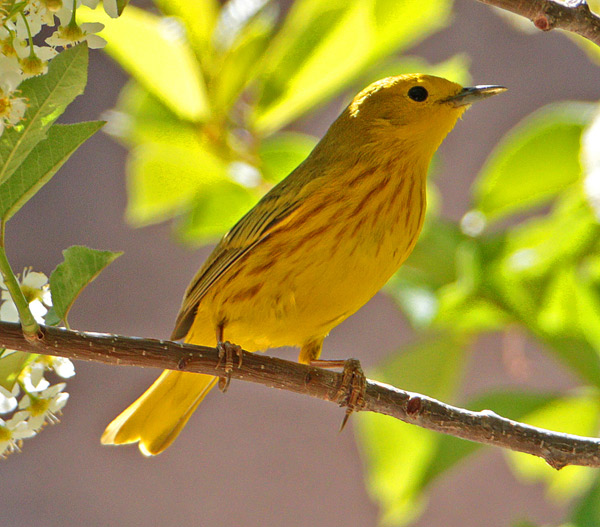
Yellow Warbler
by Jim Bruce ©Jim
Bruce |
I moved from central Orem to SW Provo 4 years ago. I'm in a new housing
development, but my daily drive takes me past Provo Bay. I can't see the lake
from my house but I see the wide open sky and the awesome sunrises and sunsets.
Being so close to the lake, I've added new species of 'backyard birds' to my
list. I'm still in a suburban area but it feels more rural than my previous
residence, and I really like that aspect of it.
A similar article came out in 2018, long before anyone had heard of Covid-19.
The article was published on CNN Health, called "Birdwatching for peace of mind
and better health". The author, Amy Chillag, talks about birding bringing
excitement year-round. She relates the focusing of your binoculars to refocusing
a cloudy, scattered mind. And how the sound of bird song and rustling leaves
makes you want to take a deep breath of fresh air, and let the tensions
disappears. It's an escape. You can leave your problems at home for awhile and
enjoy your surroundings, the fresh air, the beautiful scenery, the thrill of
seeing and hearing birds.
Both articles dive deeper into the subject and I've listed the links below if
you want to read more. I found one more article that fits in with this subject:
"Top 10 Reasons to Be a Bird Watcher". See if you agree:
10. Birds are all around us.
9. It's a connection with nature.
8. Birds get us outside.
7. It's a "flexible" pastime.
6. It's economical.
5. You can gain new friends.
4. Birds can be enjoyed year-round.
3. It often leads down other paths.
2. Bird watching is for life.
1. It promotes habitat conservation.
So with warmer spring weather, and spring migration happening, now is the time
to take advantage of your 'raise'.
|
See you out there!
Machelle
,__,
(0,0)
/)_)
""
|
Refrences:
https://nationalpost.com/news/world/birds-make-you-as-happy-as-money-study-finds?
https://www.cnn.com/2018/11/12/health/sw-birding-for-health/index.html
Top 10 Reasons to Be a Bird Watcher
|
|
BIRD OF THE MONTH:
|
|
|
|
|
European Turtle Dove
(Streptopelia Turtur)
-
By Jeremy Telford
As our family and many Christians from many
denominations around the world prepare to celebrate Easter, and as the
Jewish community celebrates Passover, it got me thinking about the birds of
the Bible, specifically the only bird, besides the pigeon, that was allowed
for temple sacrifices. It was a bird chosen to symbolize the presence of the
Holy Ghost. This is the dove, or more specifically the European Turtle Dove
(Streptopelia Turtur).
There are actually three species of dove in the
Genus Turtur (wood or turtle doves) found in Israel, the European Turtle
Dove, the Collard Turtle, and the Palm Turtle. Each are fairly similar in
appearance. We know the Bible talks specifically about the European Turtle
Dove from a scripture in Jeremiah (8:7):
“7 Yea, the stork in the heaven knoweth her
appointed times; and the turtle and the crane and the
swallow observe the time of their coming; but my
people know not the judgment of the Lord.”
And from the Song of Solomon (2:11-12):
“11 For, lo, the winter is past, the rain is over
and gone;
12 The flowers appear on the earth; the time of
the singing of birds is come, and the voice of the
turtle is heard in our land;”
The Collard Turtle and Palm Turtle are nonmigratory. The European Turtle
Dove is the only migrant of the three and breeds in central Israel, as well
as all over Europe and Asia, in the spring and summer.
Doves were not only used for religious
sacrifices, or appreciated for their calls. Dove’s dung was also used as a
substitute for salt in particularly hard times such as when a population was
being besieged or during famine.
“And there was a great famine in Samaria: and,
behold, they besieged it, until an ass’s head was
sold for fourscore pieces of silver, and the
fourth part of a cab of dove’s dung for five pieces of silver.”
(2 Kings 6:25)
The turtle dove is the smallest dove in Europe with a slim body and the
dove’s characteristically small head. It
|
Other Streptopelia
Doves |
|
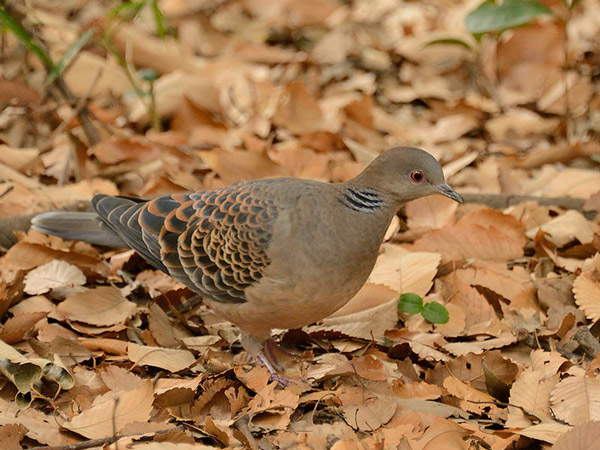
The very similar Oriental Turtle Dove
by John Crowley |
|
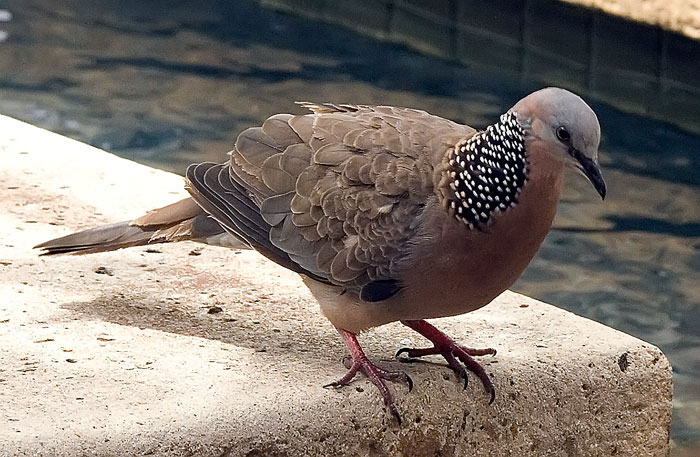
Spotted
Dove
by Kendall Brown |
|
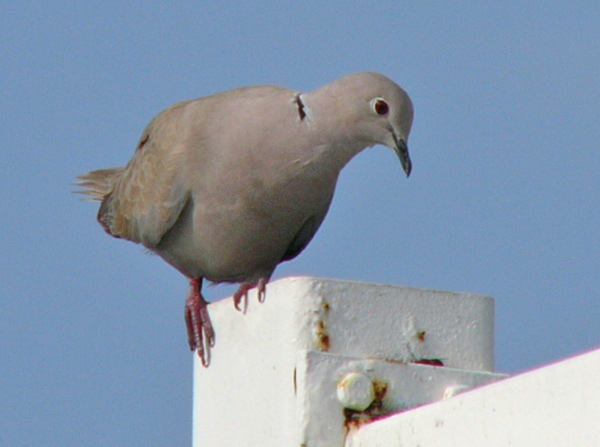
Our common Eurasian Collared-Dove
by Steve Carr |
-
is described as being the size of a blackbird. It is a pinkish gray bird
with a blush to peach colored patch on the wings with a multistriped collar
on the back of the neck. It also has a small beak and a pink eyering. The
tail feathers are tipped in white. They have short legs and tend to bob
their heads as they walk.
The turtle dove’s name comes from the tur tur
sound it makes.
The European Turtle Dove is one of the longest
migrating doves sometimes traveling more than 6,800 miles. They migrate
mostly at night and can cover over 400 miles in one night flying up to 37
miles an hour.
While the breeding grounds for the European
Turtle Dove extends all through North Africa, Europe and much of Asia, the
wintering grounds are a much smaller band that extends across central
Africa.
This bird was once a common sight in Israel and
through much of Europe. Tristram, in his book The Natural History of the
Bible described the scene in Southern Levant (Israel, Palestine and Jordan
areas) as thus in 1898.
“Search the glades and valleys even by sultry
Jordan, at the end of March, and not a Turtledove is to be seen. Return in
the second week in April, and clouds of doves are feeding on the clovers of
the plain. They stock every tree and thicket. At every step they flutter up
from the herbage in front—they perch on every tree and bush—they overspread
the whole face of the land. So universal, so simultaneous, so conspicuous
their migration, that the prophet might well place the Turtledove at the
head of those birds which ‘observe the time of their coming.’ While other
songsters are heard chiefly in the morning, or only at intervals, the Turtle
immediately on its arrival pours forth, from every garden, grove, and wooded
hill, its melancholy yet soothing ditty, unceasingly from early dawn till
sunset.” (Tristram 1898:219)
This once abundant species, the European Turtle
Dove, is the only turtle dove species now considered vulnerable. A lot of
this is considered due to habitat loss and lack of hunting restrictions. An
estimated two to four million are trapped or hunted as they migrate through
Europe.
European Turtle Doves prefer wooded habitat for
nesting, yet these trees need to be on the edge of fields so the birds may
feed on the seeds that make up most of their diet. These days the fields are
often cultivated farmland. In areas with fewer forests, like Morocco, olive
and orange groves provide ideal nesting areas.
While the turtle dove’s diet consists mainly of
seeds it will eat small animals such as worms, mollusks, and insects.
Turtle Doves are monogamous and mate for life.
The pair builds a nest and incubates the eggs together. The turtle doves
build fragile nests and often lose eggs. They can brood multiple times a
season to ensure at least some chicks survive. This, matched with a short
incubation period of a few weeks, means they may brood as many as six times
a year.
Like other doves and pigeons European Turtle
Doves produce crop milk for their chicks when they hatch. This ‘milk’ is
secreted by special cells found in the crop wall in both male and female
doves and is the only nourishment that a chick receives during the first few
days of its life. The milk is similar in composition to what developing
embryos receive inside the egg. It is richer in protein and fats than cow
milk and is produced by only a few species of birds outside the dove and
pigeon family, namely Emperor Penguins and Greater Flamingos.
Whether Christian, Buddhist, Muslim, Jewish,
Agnostic or Atheist may we all find peace as we go out to engage with nature
and enjoy the gentle call of the dove on a fresh spring morning.
https://christiananswers.net/dictionary/turtle-dove.html
https://biologydictionary.net/turtle-dove/
https://www.cms.int/sites/default/files/document/cms_cop12_doc.24.1.6_european-turtle-dove-action-plan_e_0.pdf
https://bibleresearchtoday.com/2019/06/04/turtle-dove-day-4-of-30-days-biblically-wild/
https://archive.org/details/naturalhistoryof00tris
https://www.encyclopedia.com/religion/encyclopedias-almanacs-transcripts-and-maps/turtle-dove
|
|
|
Field Trip Reports
|
|
|
|
March 2020
St. Patrick's Day Challenge
By Suzi Holt
Well we had some fun today with our St. Patty's Day challenge.
We started at Salem Pond with
#4 Find a 3 leaf clover of any 3 species with green in their plumage.
Mallard, Common Goldeneye, Bufflehead and AmericanWigeon
Birding Leprechaun ---->
|
|
|
|
then we headed to 4000 W in Lake Shore...we tried for #1 Pick your favorite field of clover (aka favorite spot) find 4 species in
one bird family.
We found a White-crowned Sparrow and a Song Sparrow but couldn't find much
of anything else there. The fields are not flooded yet either, we were
hoping to find something rare!
From there we went to Benjamin Slough thanks
to a lot of waterfowl again we did #2#2 Count as many species as you can in
17 minutes...we read it wrong and found 17 species in 17 minutes.
We then finished at 5600 S in West Mountain at a pond with #1 #1 Pick your favorite field of clover (aka Favorite spot) find 4 species in
one bird family.
We found Northern Pintail, Redhead, American Wigeon, Northern Shoveler and
Mallards.
It was a pretty lucky day with the waterfowl family! Happy Birding and Happy St. Patty's Day!
|
Saint Patrick’s Day Birding
By Alona Huffaker and Kathleen Blanchard
This is Alona Huffaker. Kathleen Blanchard and I went
birding today. We completed #1, #4 and got 11 birds in 17 minutes for #2!
Fun challenge! Thanks for suggesting it!
|
|
|
|
Saint Patrick’s Day Birding
By Kayla Echole
I got tasks 1 and 4 done today! :D
|
|
Saint Patrick’s Day Birding
By
Yvonne CarterIt was a beautiful day yesterday St. Patty's day. Yes,
I found 4 species with green on them. A total of 42 species and the Wasatch
St. Park I had 18 species in 17minutes and then at Deer Creek Reservoir
there was a total of over 30 species with 15 or 16 in 17 minutes. It is
going crazy up there. and there is a Bald Eagle is there. I had 3 rare
birds--Can you believe Ebird is listing Osprey as a rare bird?!
So great to get out and bird, Beautiful day
I birded Wasatch St. Park and had 18 species
in 16 minutes.
I birded Deer Creek Reservoir and had 17
species in 17 minutes although total for Deer Creek was 29
I had 4 that had green: Mallard, Great Wing
Teal, Amer. Wigeon, No. Shoveler
Rare: Trumpeter Swan, Eurasian Wigeon, Red
Breasted Merganser. Ebird is listing Osprey as rare. Why so? They
are just coming in--not rare to us.
I had 18 for same family.
Yvonne Carter
|
|
|
|
|
Saint Patrick’s Day Birding
By Bryan Shirley
On March 17 I was down Blanding so I did my St. Patrick’s Day birding at the
Blanding sewage ponds. The first couple of ponds had almost no birds, so I
was a bit worried about if I could get everything done. But then the rear
pond was loaded full of ducks. Made it really easy to do all four categories
in about 20 minutes.
The first category was “Field of Clover” - find four species in the same
family. All the ducks made this one easy.
The second category was count as many species as you can in 17 minutes. I
kind of lost track of time but ended up with 20 species in a bit over twenty
minutes.
The third category was the “lucky” bird - mine best bird was a peregrine
falcon sitting on a telephone pole watching the same ducks as me.
The fourth category was find a Three Leaf Clover - 3 species with green. I
had a Mallard, Green-winged Teal, and Northern Shoveler.
Thanks to Suzi and everybody for all your work planning and doing stuff to
make our club so awesome!!
|
|
Three Lucky Winners!
|
|
 |
|
|
|
|
|
|
|
|
If you have had any interesting
field trips on your own this month,
feel free to write a report for the newsletter!
(Send it to:
ucbirders@utahbirds.org)
|
|
|


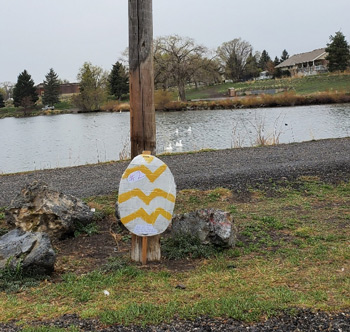
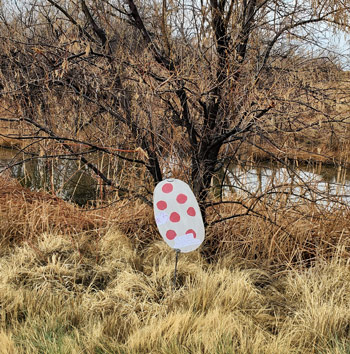

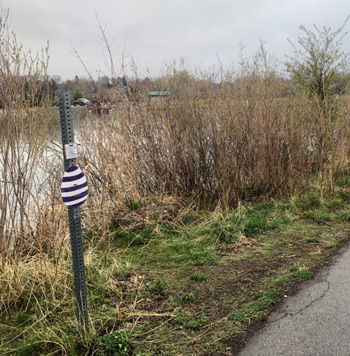 5.
5.
